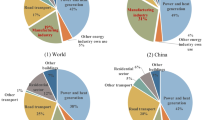Abstract
The green environmental laws and regulations are legislated, implemented, and enforced in many countries and economic regions. The provision of green products and services are the fast growing trend in global consumer markets. Therefore, introducing new products with environmental considerations becomes critical for global brand manufacturers. This research depicts an integrated and intelligent eco- and inno-product design methodology to support environmental friendly green product development. The methodology adopts approaches, such as life cycle assessment (LCA), quality function deploymnet for environement (QFDE), theory of inventive problem solving (TRIZ) and back-propagation network (BPN) to achieve eco- and inno-design objectives. LCA evaluates and compares the environmental impacts of production. QFDE transforms high-level concerns of environment into design requirements. When there are many historical QFDE data, the BPN prediction model is trained and deployed to automate the specifications of green design improvement. TRIZ is to support the creation of innovative product design ideas effectively and efficiently during the concept design stage. Finally, this paper presents two eco-design cases of power adaptor to demonstrate the proposed methodology.
Similar content being viewed by others

References
Ahn, Y.J. & Lee, K.W. (2006). Application of axiomatic design and TRIZ in ecodesign. The TRIZ Journal, September. Available via DIALOG. http://www.triz-journal.com/archives/2006/09/05.pdf. Cited May 16, 2011
Altshuller, G. (1996). And Suddenly the Inventor Appeared: TRIZ, the Theory of Inventive Problem Solving. Technical Innovation Center, Massachusetts
Altshuller, G., Shulyak, L. & Rodman, S. (2005). 40 Principles: TRIZ Keys to Innovation. Technical Innovation Center, Massachusetts
Chang, H.T. (2005). The study of integrating Su-field analysis modeling with eco-innovative concept for product design. In: the 4th International Symposium on Environmentally Conscious Design and Inverse Manufacturing (Eco Design 2005), 663–670, Tokyo, Japan, December 12–14, 2005
Changqing, G. (2006). Selecting TRIZ tools by RDM. The TRIZ Journal, August. Available via DIALOG. http://www.triz-journal.com/archives/2006/0 8/06.pdf. Cited May 16, 2011
European Parliament. (2005). Directive 2005/32/EC of the European Parliament and of the council of 6 July 2005 establishing a framework for the setting of eco-design requirements for energy-using products and amending council Directive 92/42/EEC and Directive 96/57/EC and 2000/55/EC of the European Parliament and of the Council. Official Journal of the European Union
European Parliament. (2009). Directive 2009/125/EC of the European Parliament and of 21 October 2009 establishing a framework for the setting of eco-design requirements for energy-related products. Official Journal of the European Union
ISO. (2002). ISO 14062 Environmental management — integrating environmental aspects into product design and development. Technical Report, Genvea
ISO. (2006a). ISO 14040 Environmental management — life cycle assessment — principles and framework. Technical Report, Geneva
ISO. (2006b). ISO 14044 Environmental management — life cycle assessment — requirements and guidelines. Technical Report, Geneva
ITRI. (2011). DoITPro. Available via DIALOG. http://www.itri.org.tw/chi/tech-transfer/04.asp?RootNodeId=040&NodeId=041&id=2023. Cited May 16, 2011
Lin, C.S. & Su, C.T. (2007). An innovative way to create new service: applying the TRIZ methodology. Journal of the Chinese Institute of Industrial Engineers, 24(2): 142–152
Masui, K., Sakao, T. & Inaba, A. (2001). Quality function deployment for environment: QFDE (1st report) — a methodology in early stage of DfE. In: the 2nd International Symposium on Environmentally Conscious Design and Inverse Manufacturing (Eco Design 2001), 852–857, Tokyo, Japan, December 11–15, 2001
Nissen, N.F., Stobbe, L., Schischke, K., Muller, J. & Reichl, H. (2007). European environmental legislation — insights into the EuP Process. In: IEMT’07: the 32nd IEEE/CPMT International Electronic Manufacturing Technology Symposium, 25–331, San Jose, CA, October 3–5, 2007
Park, P.J., Lee, K.M. & Wimmer, W. (2006). Development of an environmental assessment method for consumer electronics by combining top-down and bottom-up approaches. The International Journal of Life Cycle Assessment, 11(4): 254–264
Pennington, D.W., Potting, J., Finnveden, G., Lindeijer, E., Jolliet, O., Rydberg, T. & Rebitzer, G. (2004). Life cycle assessment part 2: current impact assessment practice. Environment International, 30(5): 721–739
PRé Consultants. (2000). Eco-indicator 99 manual for designers. Netherlands’ Ministry of Housing, Spatial Planning, and the Environment. Available via DIALOG. http://www.pre.nl/download/EI99_Manual.pdf. Cited May 16, 2011
Rebitzer, G., Ekvall, T., Frischknecht, R., Hunkeler, D., Norris, G., Rydberg, T., Schmidt, W.P., Suh, S., Weidema, B.P. & Pennington, D.W. (2004). Life cycle assessment part 1: framework, goal and scope definition, inventory analysis, and applications. Environment International, 30(5): 701–720
Rumelhart, D.E., Hinton, G.E. & Williams, R.J. (1986). Learning internal representations by error propagation. In: Parallel Distributed Processing, 1, pp. 318–362. MIT Press, Cambridge, MA
Sakao, T. (2007). A QFD-centred design methodology for environmentally conscious product design. International Journal of Production Research, 45(18–19): 4143–4162
Savransky, S.D. (2000). Engineering of Creativity: Introduction to TRIZ Methodology of Inventive Problem Solving. CRC Press, New York
Terninko, J. (2000). Su-Field analysis. The TRIZ Journal. Available via DIALOG. http://www.triz-journal.com/archives/2000/0 2/d/index.htm. Cited May 16, 2011
Zhang, Y., Wang, H.P. & Zhang, C. (1998). Product concept evaluation using GQFD-II and AHP. International Journal of Environmentally Conscious Design and Manufacturing, 7(3): 1–15
Author information
Authors and Affiliations
Corresponding author
Additional information
Amy J.C. Trappey is a professor in the Department of Industrial Engineering and Engineering Management (IEEM) at National Tsing Hua University (NTHU), Taiwan. She received her Ph.D. in Industrial Engineering from Purdue University. Dr. Trappey is an ASME and ISEAM Fellow.
Jerry J.R. Ou is a faculty in Business Administration at Southern Taiwan University.
Gilbert Y.P. Lin is a post-doctoral researcher at NTHU, who received his Ph.D. degree in the Department of Industrial Engineering and Engineering Management at NTHU. His research interests are in e-business, global logistics management, and green supply chain management.
Meng-Yu Chen received his master’s degree in the Department of Industrial Engineering and Engineering Management at NTHU.
Rights and permissions
About this article
Cite this article
Trappey, A.J.C., Ou, J.J.R., Lin, G.Y.P. et al. An eco- and inno-product design system applying integrated and intelligent qfde and triz methodology. J. Syst. Sci. Syst. Eng. 20, 443–459 (2011). https://doi.org/10.1007/s11518-011-5176-8
Published:
Issue Date:
DOI: https://doi.org/10.1007/s11518-011-5176-8



